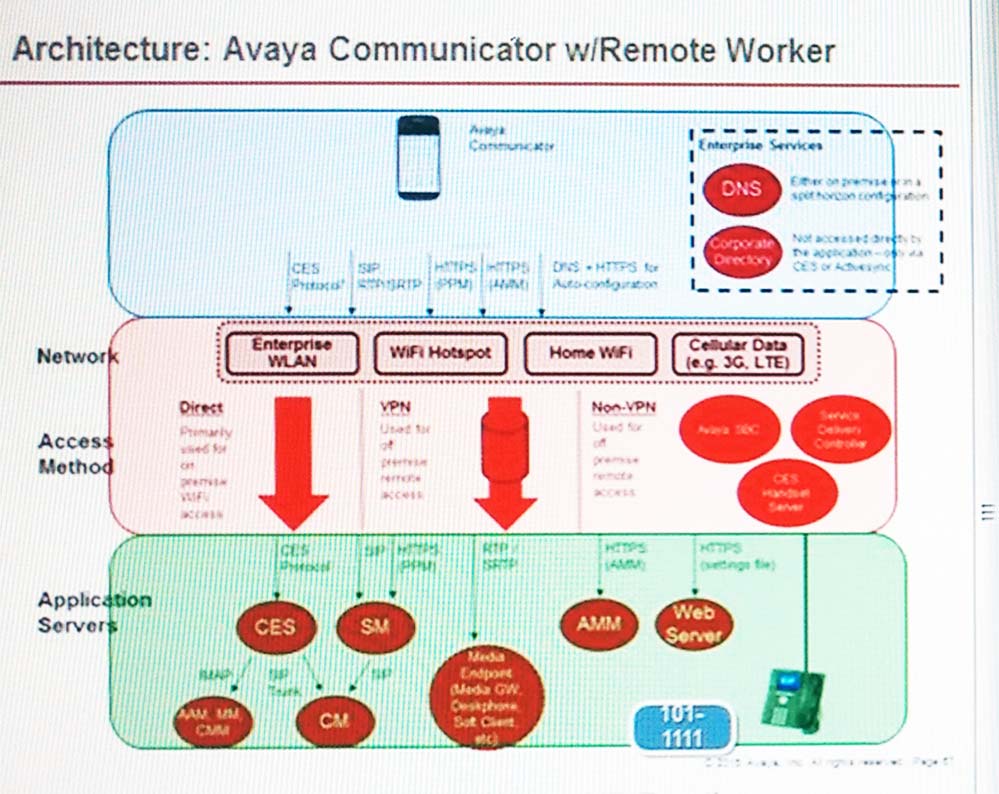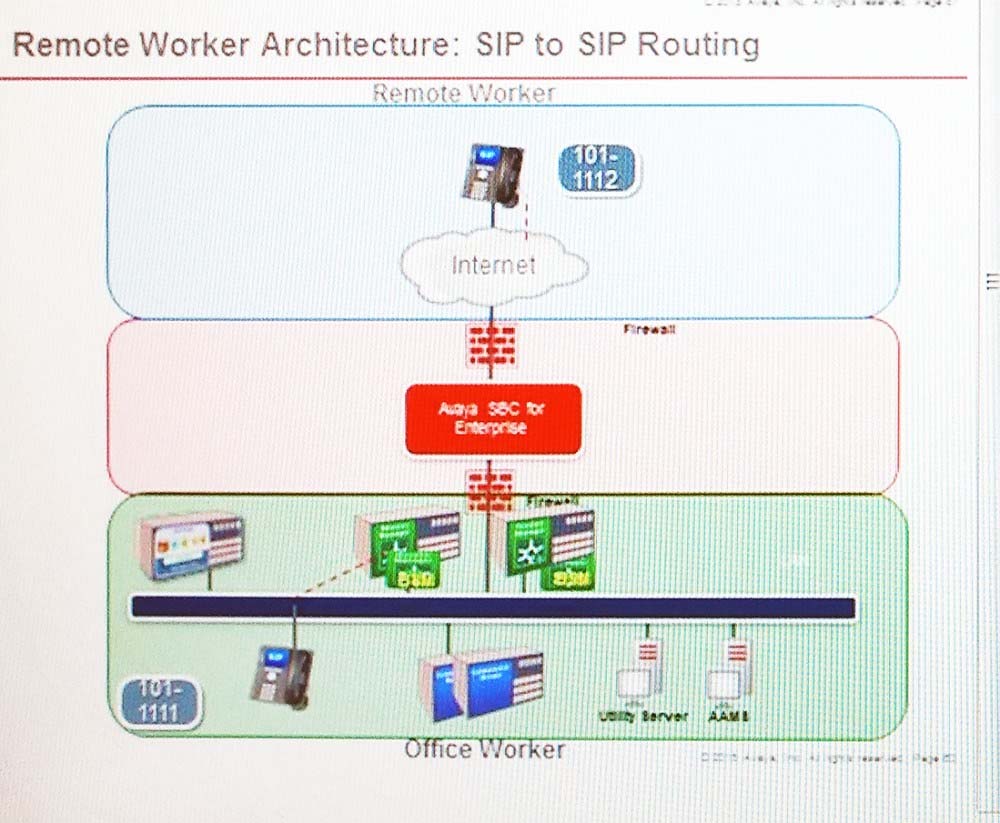Avaya 7220X Exam Practice Questions (P. 2)
- Full Access (77 questions)
- Six months of Premium Access
- Access to one million comments
- Seamless ChatGPT Integration
- Ability to download PDF files
- Anki Flashcard files for revision
- No Captcha & No AdSense
- Advanced Exam Configuration
Question #6
Refer to the Exhibits.


The SIP call flow made from an Avaya Communicator Remote Worker is on the left, and the call flow made from a 96X1 telephone Remote Worker is on the right.
When comparing the two call flows, which statement is true?


The SIP call flow made from an Avaya Communicator Remote Worker is on the left, and the call flow made from a 96X1 telephone Remote Worker is on the right.
When comparing the two call flows, which statement is true?
- AThere is no difference between the two.
- BAvaya Aura Communication Manager does full call model processing for the SIP-to-SIP call flow and does half-call model processing for the SIP-to- Communicator call flow.
- CThe Communicator does not register to Avaya Aura® Session Manager.
- DThe Communicator registers to Avaya Session Border Controller for Enterprise (SBCE).
Correct Answer:
A
A
send
light_mode
delete
Question #7
After an Avaya Aura Communication Manager (CM) upgrade, a customer called Avaya support because their SIP telephones were unable to login. Support was able to confirm that the telephones had not been upgraded.
Which pre-implementation step was omitted?
Which pre-implementation step was omitted?
- AProvide accurate licensing specification.
- BVerify version installed is compatible with existing versions.
- CTest all third-party equipment and software.
- DAccess support.avaya.com to verify customer systems compatibility.
Correct Answer:
B
B
send
light_mode
delete
Question #8
Which two statements regarding the core architecture in the Avaya Aura® 7 solution are true? (Choose two.)
- ASIP trunks can only be configured on Avaya Aura® Session Manager (SM).
- BSIP user Agents register with Avaya Aura® Session Manager (SM).
- CSIP User Agents can register to Avaya Aura® Communication Manager (CM) or Avaya Aura® Session Manager (SM).
- DAvaya Aura® Media Server (AAMS) cannot connect to Avaya Aura® Communication Manager (CM) without routing via Avaya Aura® Session Manager (SM).
- EAvaya Aura® Media Server (AAMS) connects directly to Avaya Aura® Communication Manager (CM) using SIP.
Correct Answer:
BE
BE
send
light_mode
delete
Question #9
Which statement about Interfaces and IP addresses on an Avaya Session Border Controller for Enterprise (SBCE) used for SIP-Trunking and Remote Worker services is true?
- ASIP Trunking and Remote Worker services can use different IP addresses configured on the same Interface.
- BSIP-Trunking and Remote Worker services can share the same IP address.
- COnly one IP-address should be configured per interface.
- DSIP-Trunking and Remote Worker services cannot run on the same SBCE.
Correct Answer:
A
A
send
light_mode
delete
Question #10
A remote worker using the Avaya Communicator on the smart mobile phone obtains a private IP address delivered from the corporate network over WiFi when in range of the wireless hotspot. When the remote worker is out of range of the corporate WiFi it obtains a Public IP address via the 3G/4G mobile Service Provider.
When roaming from the public network to the corporate private network and vice versa, which strategy prevents the user from having to change the SIP Proxy
Server address in the smartphone?
When roaming from the public network to the corporate private network and vice versa, which strategy prevents the user from having to change the SIP Proxy
Server address in the smartphone?
- ANetwork Address Translation (NAT)
- BAvaya Session Border Controller for Enterprise (SBCE) public IP-address
- CSplit Horizon DNS with FQDN
- DVirtual Private Network (VPN)
Correct Answer:
C
C
send
light_mode
delete
All Pages
